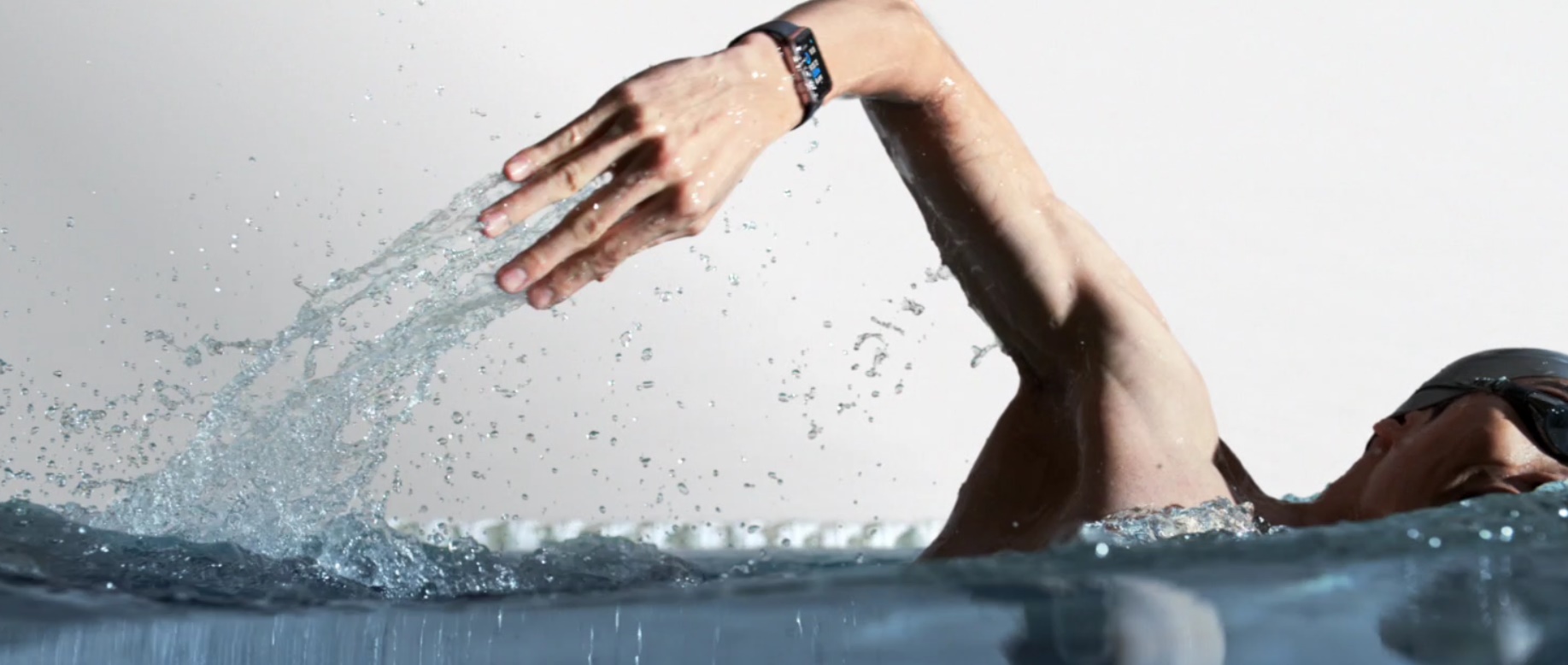You can finally swim with your Apple Watch, with a few caveats

Last week, an all-new Series 2 Apple Watch was unveiled, with a largely untouched design, still featuring the familiar digital crown and interface, but with a range of internal and structural new features that make the Apple Watch Series 2 leaps and bounds ahead of its predecessor. The new Watch packs a dual core processor, twice the display brightness of the original Apple Watch, and built-in GPS.
Earlier rumors suggested the possibility that the new Apple Watch would integrate a camera, and FaceTime support, however this version is clearly geared towards a fitness-oriented audience, with a greater emphasis on fitness tracking, display quality, responsiveness, connectivity and processing speed.
By that token, this new version of the Apple Watch is “swimproof”, which means that it can withstand immersion 50 meters deep, for an extended period of time, except for “scuba diving, waterskiing, or other activities involving high-velocity water or submersion below shallow depth”, as described at the bottom of the Apple Watch Series 2 information page on the Apple website.
“Swimproof” does not mean “waterproof”
Just like the iPhone 7, the Apple Watch Series 2 is water resistant, but not waterproof. For most users, the difference is negligible. For instance, the Apple Watch Series 2 can be worn when washing your hands, showering, or swimming in a shallow body of water, down to 50 meters. Scuba diving at greater depths, or riding a jetski, exposes the Watch to water pressure that is far too greater for it to handle, which will result in the internal hardware to be crushed inside the casing.
Water pressure, however, is only one thing that can affect the Watch’s water resistance. An Apple support page dedicated to the new Apple Watch contains a list of scenarios that should be avoided when using an Apple Watch Series 2, and also when certain Watch bands are used:
- Dropping Apple Watch or subjecting it to other impacts.
- Exposing Apple Watch to soap or soapy water.
- Exposing Apple Watch to perfume, solvents, detergent, acids or acidic foods, insect repellent, lotions, sunscreen, oil, or hair dye.
- Exposing Apple Watch to high velocity water, for example while water skiing.
- Wearing Apple Watch in the sauna or steam room.
What to do if your Watch is subjected to water damage
First of all, using a blow-dryer is always a bad idea when trying to dry any electronic device. Apple Watch is constructed using materials that may melt or become dangerously pliable when reaching certain temperatures, which could permanently turn an Apple Watch into an expensive dull bracelet.
Shaking the Watch, is also another action that should be avoided, as the moisture within the casing may spread further, affecting other components.
The best way to eliminate moisture inside a damaged Apple Watch, is to simply let it charge overnight. The heat generated from the battery will be enough to cause any internal moisture to evaporate through the speaker.
Ready to shop?
Shop for the ultimate deals in productivity at PortableOne where you’ll find the latest, powerful iPad Pro , as well as a complete range of accessories.